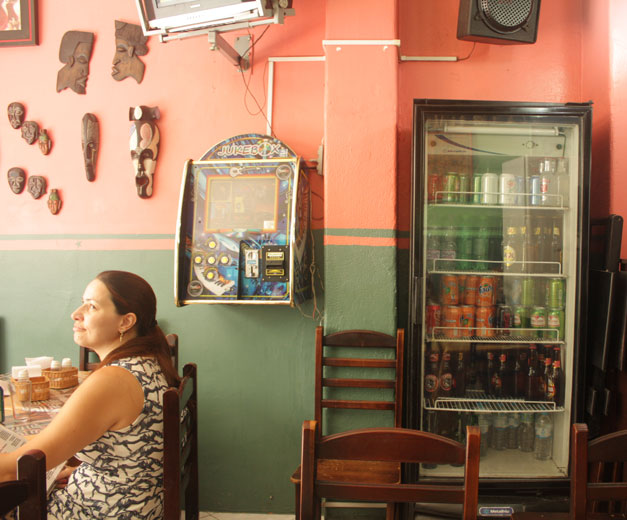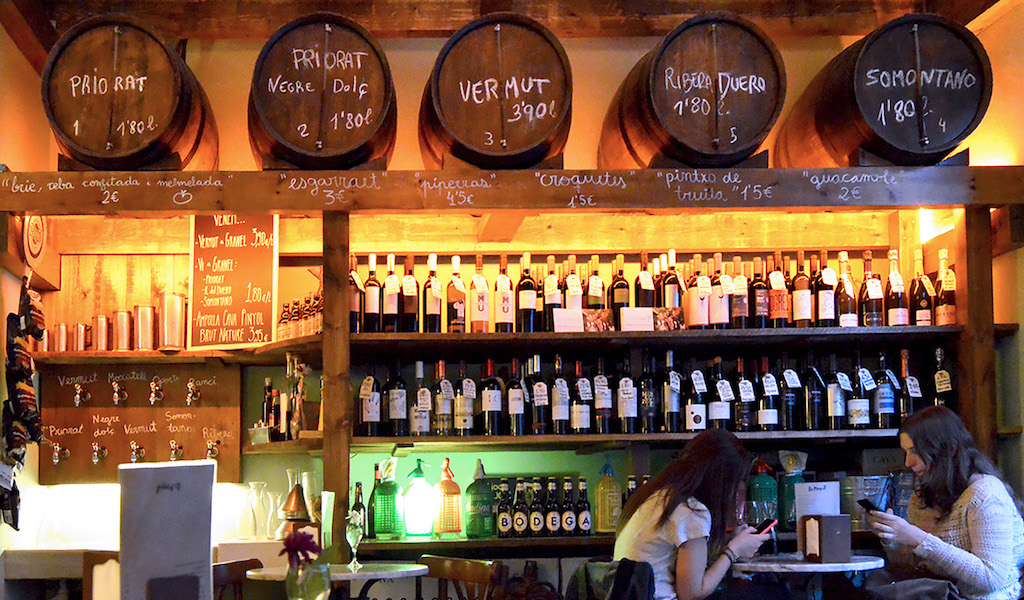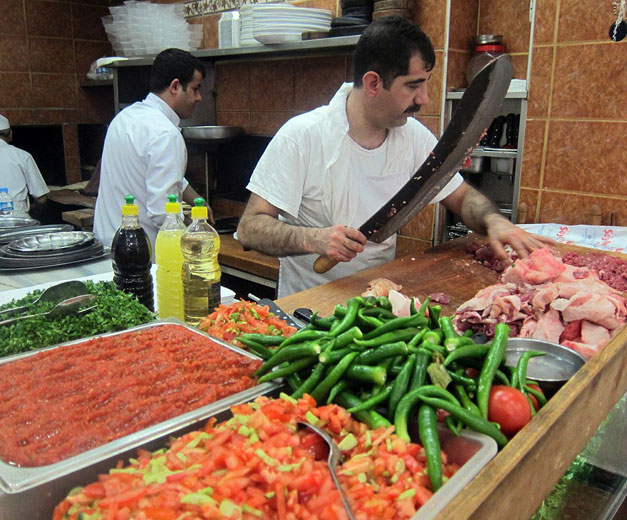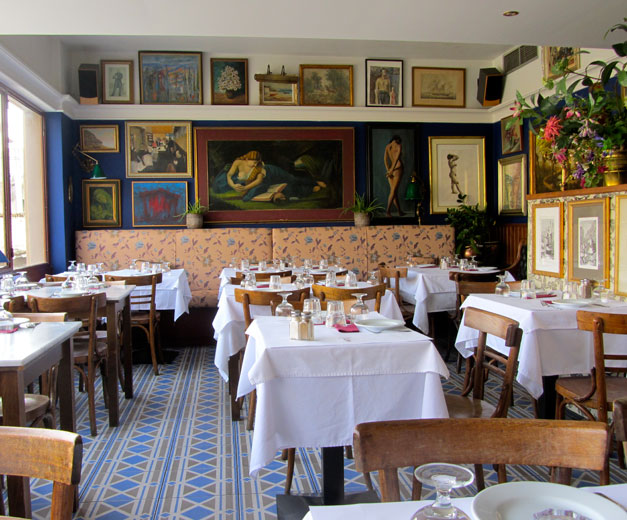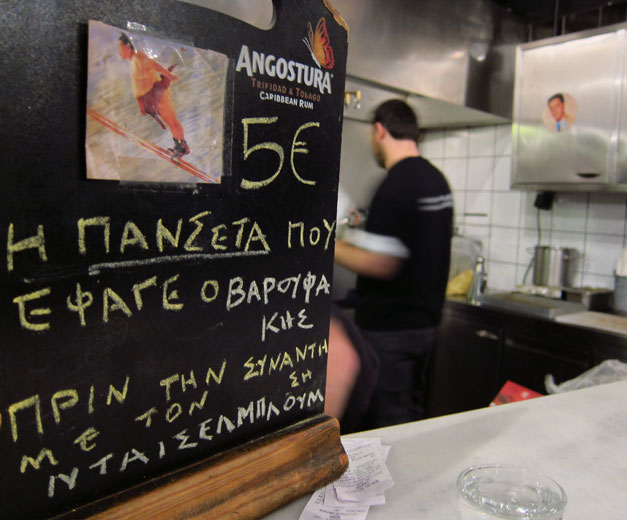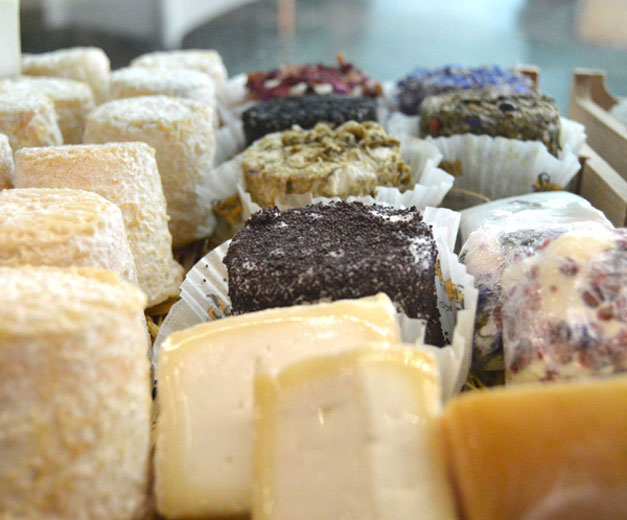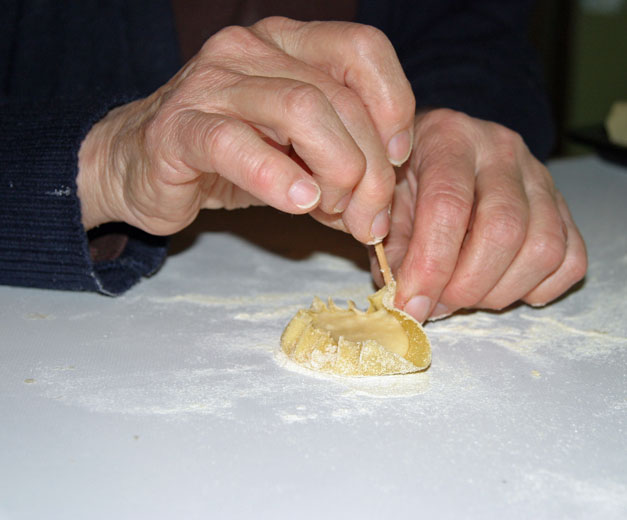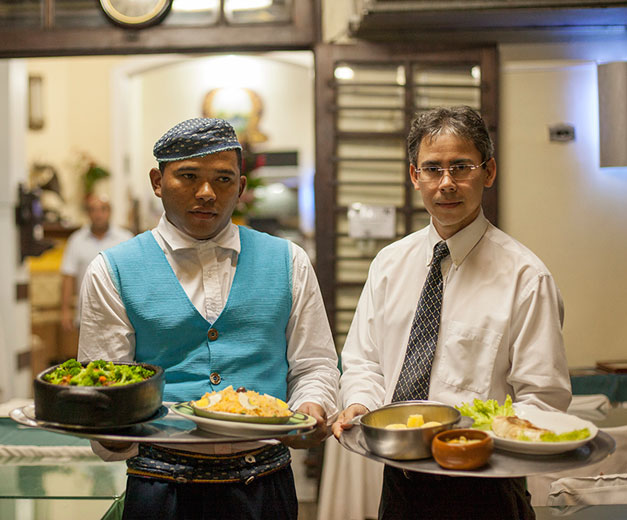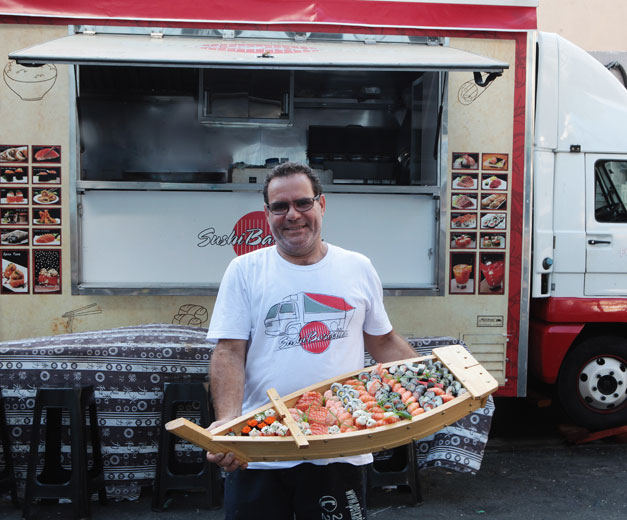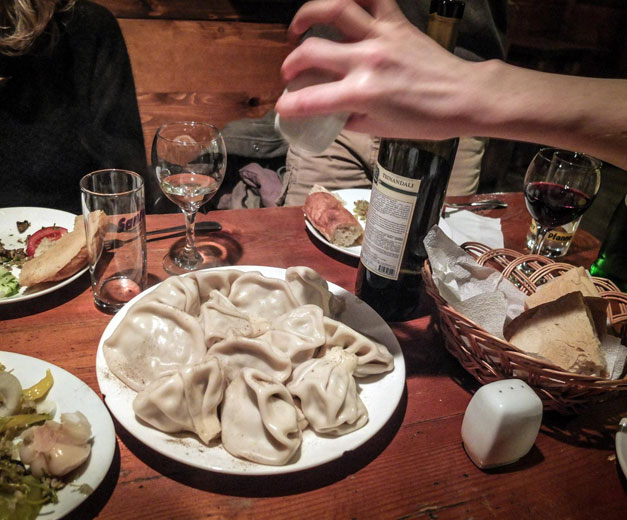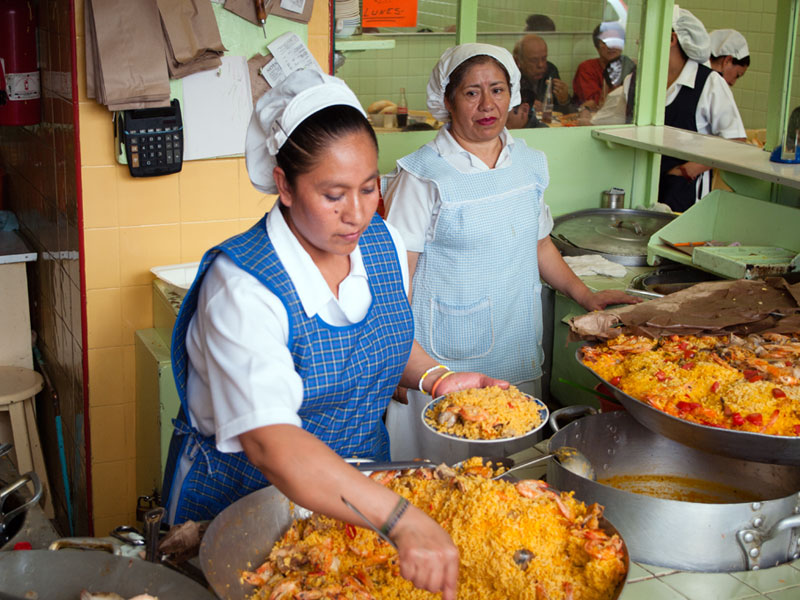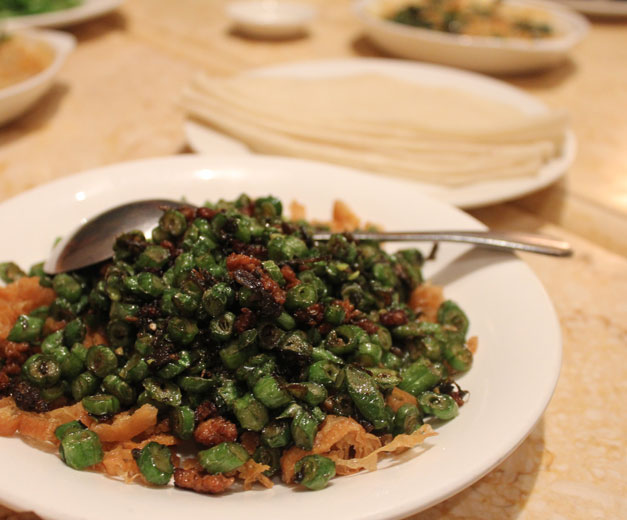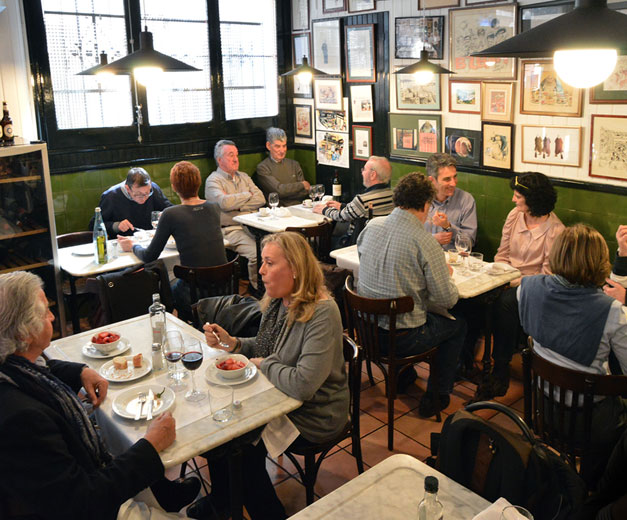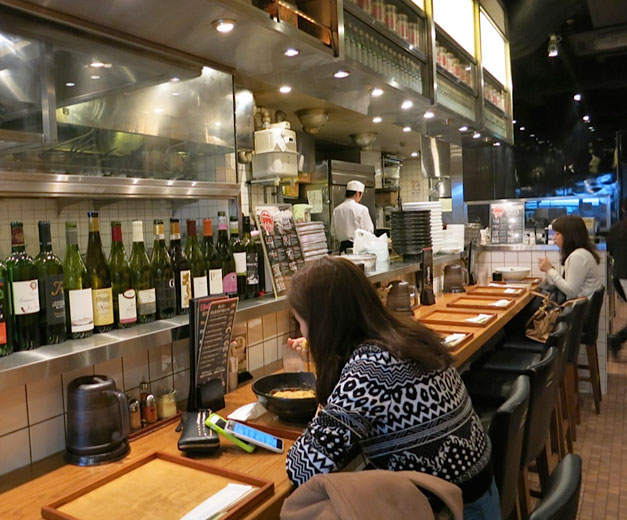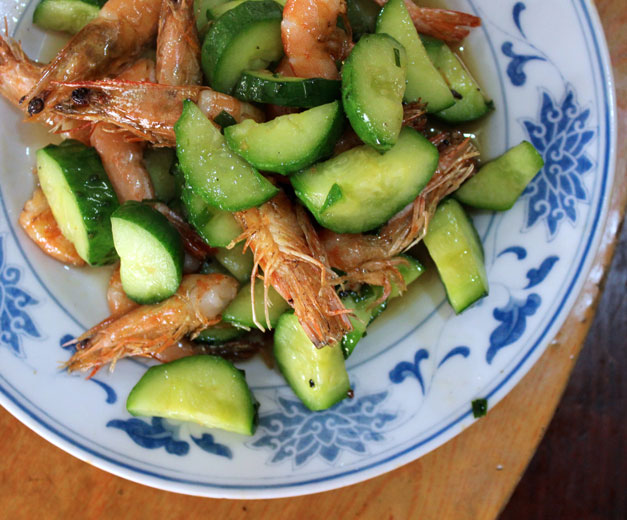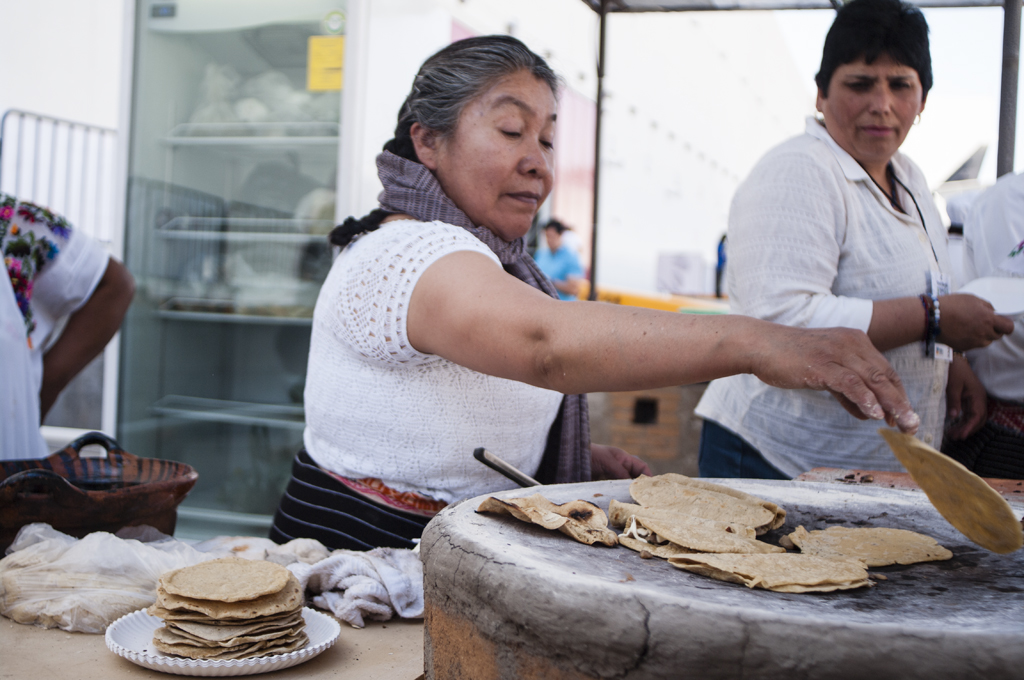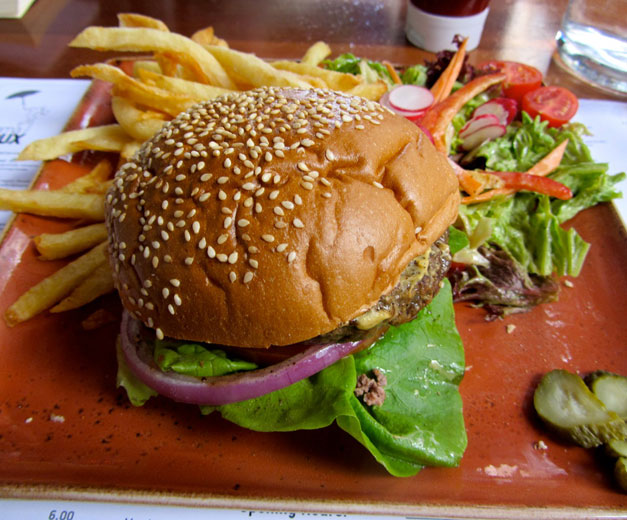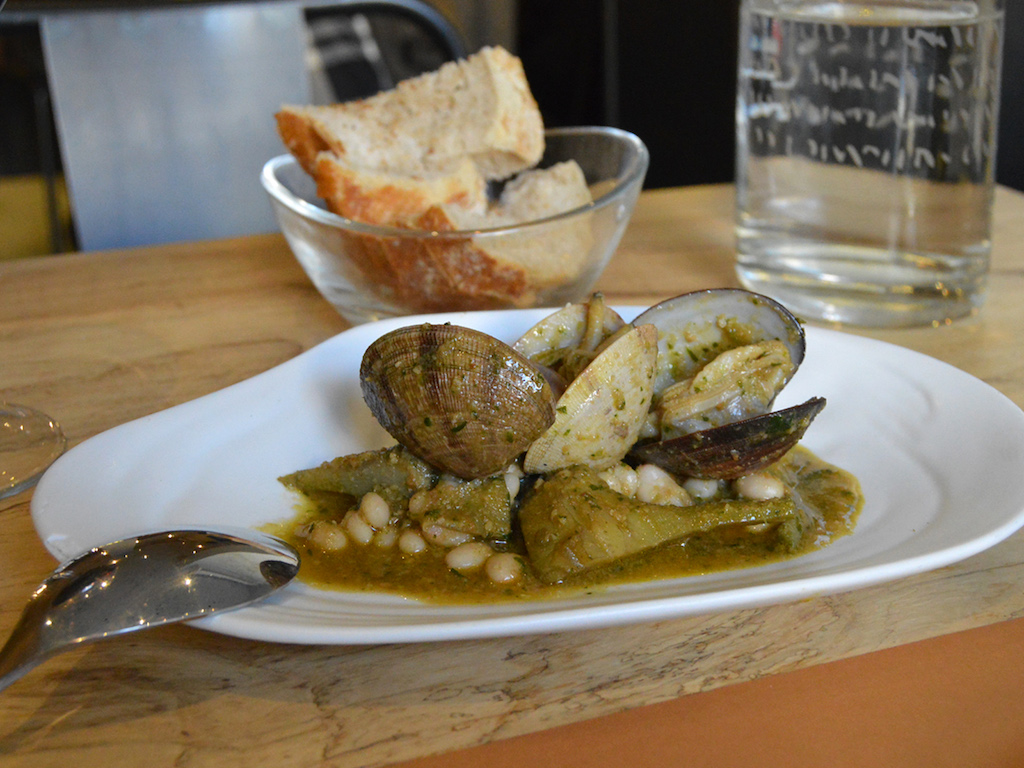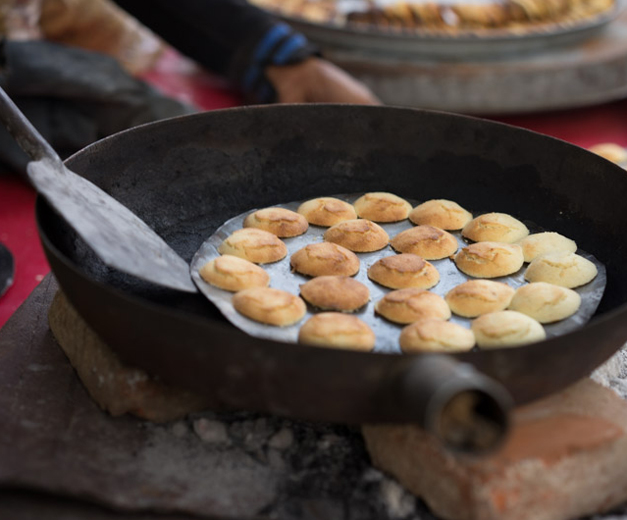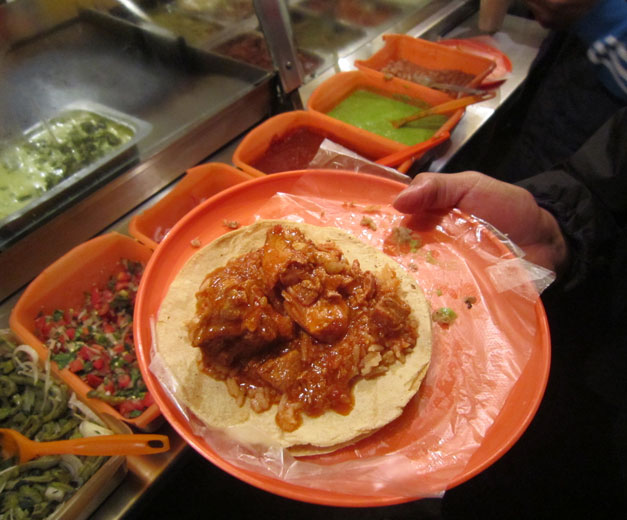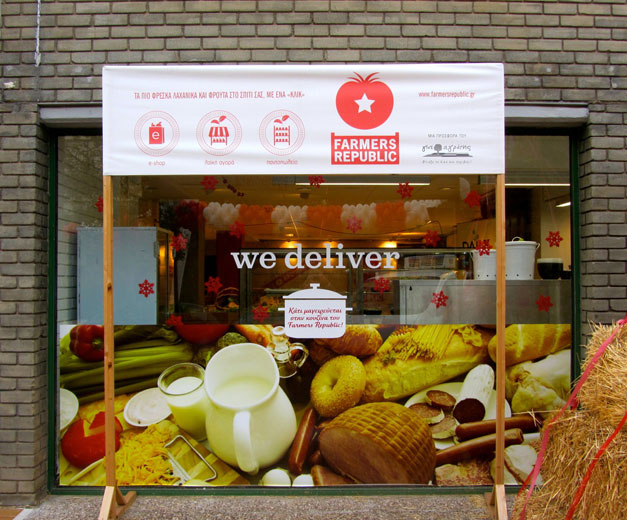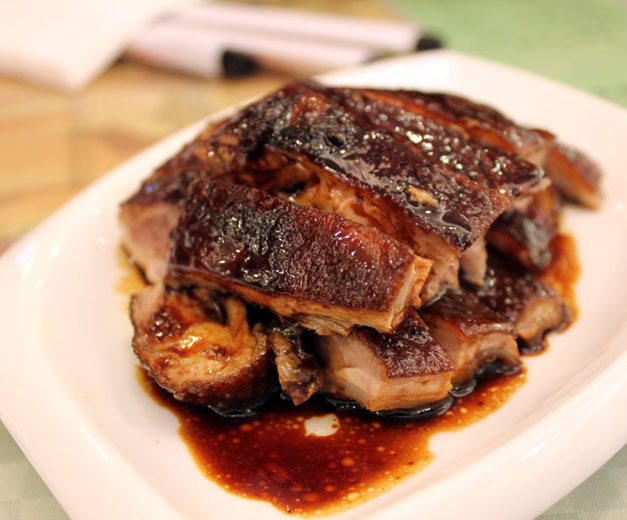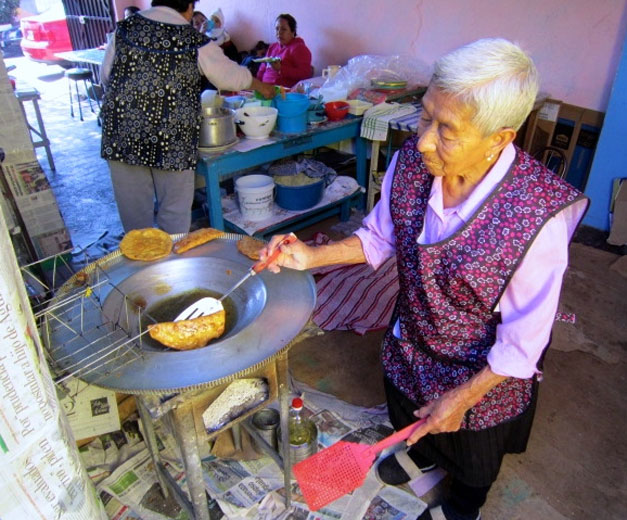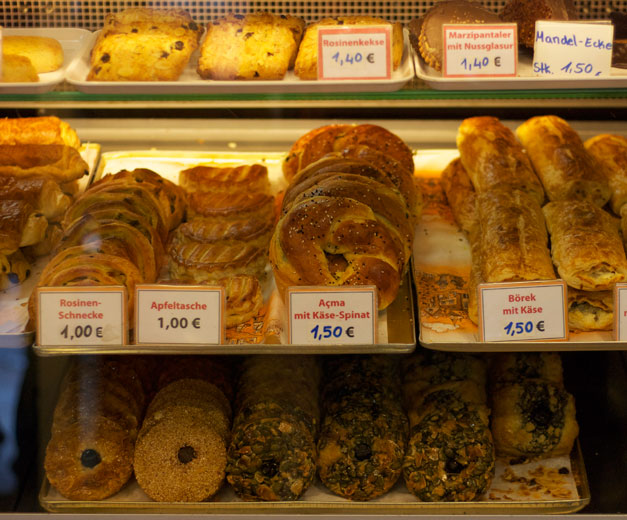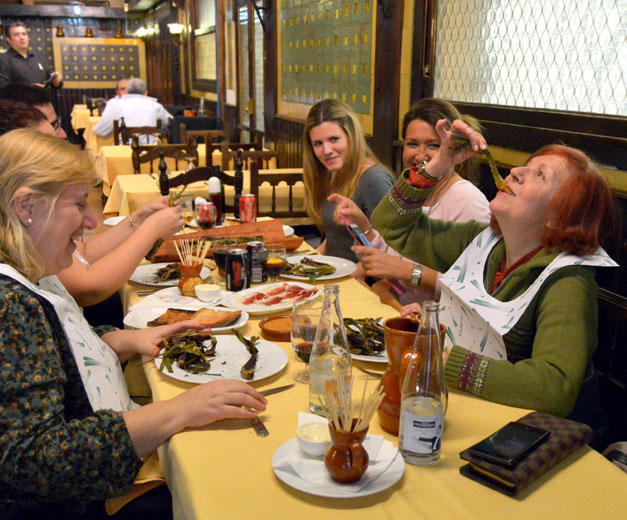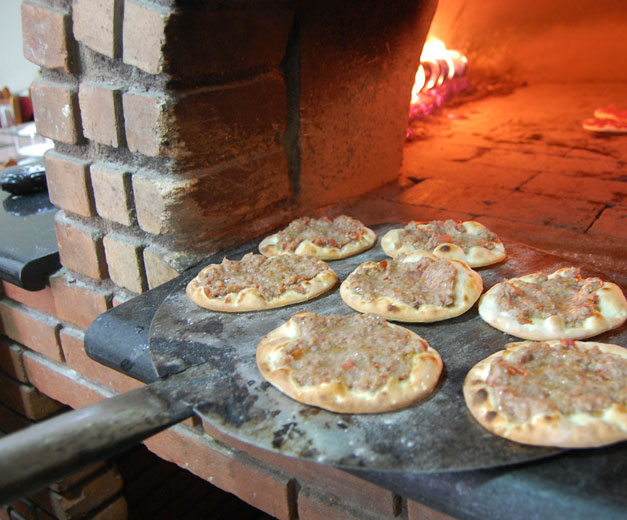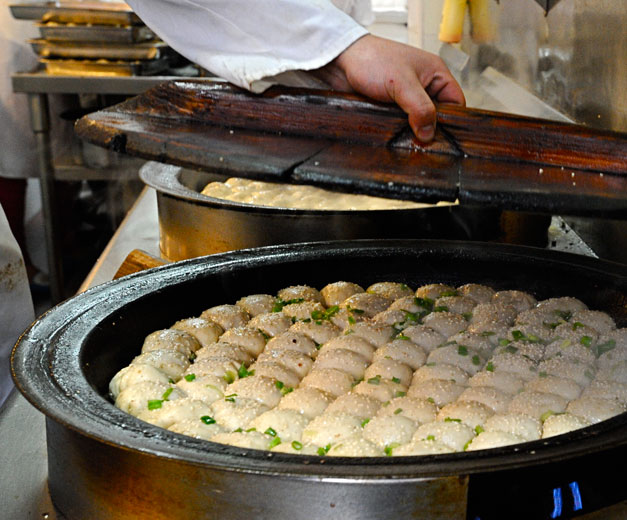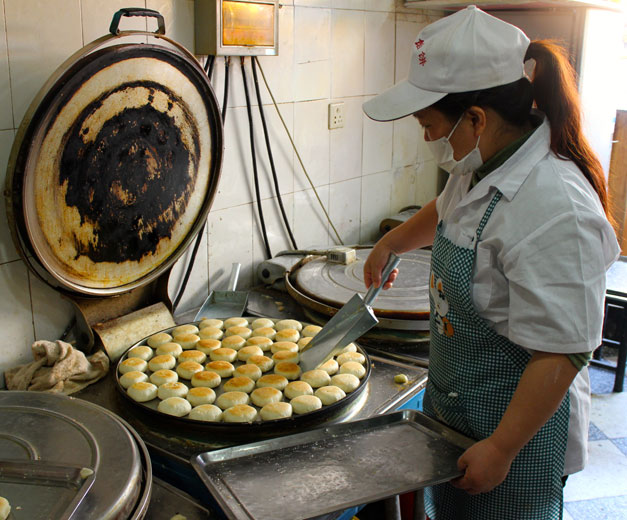We can't find the internet
Attempting to reconnect
Something went wrong!
Hang in there while we get back on track
Search results for
Elsewhere
Biyou'Z: African Roots
Melanito Biyouha's restaurant in São Paulo’s gritty Centro is a social sort of place. The salmon-pink dining room opens to the street, inviting passers-by to stop, bate-papo, talk football and grab a cold drink from the fridge. Others sit at tables and fill out immigration forms or apply for jobs. Everyone stays for the food, prepared in the tiny open kitchen.
Read moreBarcelona
Lo Pinyol: Book Club
Bars and literature are like bees and flowers: two separate worlds linked to each other through a symbiotic relationship that benefits both. Writers and characters have been the natural inhabitants of taverns and pubs in Dublin and London, bohemian cafés in France, Vienna and Madrid, and, of course, the old neighborhood restaurants and bodegas of Barcelona.
Read moreShanghai
Let the Sun Shine: Shanghai's Top 5 Alfresco Chinese Restaurants
As soon as spring has sprung, Shanghai’s expat population flocks to the many patios, rooftops and terraces of the city’s dining establishments to eat and drink, but finding a Chinese restaurant with an outdoor space, especially one in the sun, can be difficult. However, just because the sun is out doesn’t mean you have to eat Western. We’ve rounded up five great places in town where you can wield your chopsticks while soaking up your daily dose of Vitamin D. In no particular order:
Read moreIstanbul
Şeyhmus Kebab: The Rhythm of the Knife
We’ve committed a lot of space on this blog to identifying the taste, smell and sight of a seriously good kebab, but it was not until we sat in Şeyhmus Kebap Evi (on a tip from chef Gencay over at Meze) that we came to know what delicious kebab actually sounds like.
Read moreAthens
Café Avissinia: Flea Market Find
Sooner or later almost everyone in Athens, tourist or local, heads for the flea market, the city’s oldest bazaar, below Monastiraki Square. Although it’s busiest on Sundays, all week long you can rummage through the antiques – furniture, bric-a-brac, mirrors, paintings, vintage toys, statuettes, vases, silverware – spread out in colorful disorder in front of the small shops that line all four sides of Avissinia Square.
Read moreMexico City
Los Parados de Don Pepe: Taco Grande
In our recent explorations of Mexico City’s Azcapotzalco neighborhood, we were taken to a taquería that was going to “blow our minds,” according to our host. After having some drinks at El Dux de Venecia, the oldest surviving cantina in the city, we headed around the corner to Los Parados de Pepe for a visit.
Read moreTokyo
Nodaiwa: The Eel Deal
The thought of eating eel can be off-putting, yet the super-fragrant, umami-tasting, velvety-textured delicacy is one of Japan’s prized foods. A best bet for dining like a true Tokyoite is to include an unagi (freshwater eel) meal at one of Tokyo’s top unagi restaurants serving only the one delicacy. The first Japanese character in the Japanese word for unagi (う) resembles the meter-long fish, and most unagi places enthusiastically employ imaginative ways to display their specialty on signs outside the restaurant. The fish can be expensive, depending on quality, and is highly prized for its preparation, taste and nutrition, being high in Vitamin A, B-complex, protein and calcium.
Read moreAthens
Elvis: Viva Souvlaki
The lively neighborhood of Metaxourgeio takes its name from a silk factory that was once located there (metaxi is silk in Greek). While small, the trendy area is home to a vibrant mixture of people from all over the world who inhabit Athens’ typical old buildings, surrounded by theaters and a thriving art scene. It’s one of our favorite neighborhoods for strolling. And this time of year sees Metaxourgeio in the spotlight: It’s especially famous for having one of the most impressive freestyle Apokries (Carnival) celebrations!
Read moreBarcelona
Catalan Cheese, Part 1: Reviving Old Traditions
Update: Poncelet Cheese Bar is sadly no longer open. Many gastronauts come to Barcelona in search of tapas or cutting-edge cooking, but rarely cheese. We think that should change. Catalonia, after all, produces the greatest variety of artisan cheeses of all the regions in Spain, with more than 150 kinds at last count, many of them made by small producers or in milk cooperatives in the mountains using both pasteurized and raw milk from cows, sheep or goats. While in the past, in order to taste these cheeses, one had to travel to the often-tiny village where a specific cheese was made, nowadays it’s much easier to find them at markets, specialized shops, restaurants and bars in Barcelona.
Read moreAthens
Melitinia: Island Easter
The Holy Week in Greece is full of scents and flavors. Ovens work overtime baking brioches (tsourekia), Easter biscuits and melitinia, diminutive sweets that originate from Santorini. Traditionally, melitinia are made by women and girls on Holy Tuesday to be eaten on the evening of the Resurrection and the coming days of Easter (Orthodox Easter falls on April 12 this year).
Read moreRio
Restaurante da Quinta da Boa Vista: The Royal Treatment
Between the modernist Burle Marx promenade lining the Copacabana beach and the Brazilian penchant for striving to be the country of the future, it’s easy to forget that Rio is rich with history. The centuries have seen the waxing and waning of an empire.
Read moreTbilisi
Vino Underground: Wine Heaven
Ènek poured a rosy-colored splash of wine into our glasses, avidly explaining how this particular Aladasturi grape vine was meticulously cultivated in its native west Georgia. In a tasting ritual uncommon in Georgia, we swirled it, sniffed it and savored the flavor as it caressed our tongues. Here in the “cradle of wine,” the land where viticulture is believed to have originated 8,000 years ago, wine is customarily poured into a water glass and “tasted” in one long drag, until drained. But in this cozy cellar in the heart of Tbilisi’s historic Sololaki neighborhood, seven winemakers have come together to offer an alternative convention to winemaking and consumption. They call it Vino Underground, but we call it wine heaven.
Read moreIstanbul
CB on the Road: Organ Harvest in Turkey's Liver Capital
The city of Edirne sits on the borders of Bulgaria and Greece in the far northwestern and European portion of Turkey. Once the capital of the Ottoman Empire, Edirne has been occupied for thousands of years, dating back to the Romans and Thracians before them. While no longer the seat of an empire, Edirne could still be considered a culinary capital for tava ciğer, or fried liver. Two things are constant companions to travelers venturing into Edirne: glistening portraits of famous oiled-up wrestlers (a big annual contest is held nearby) and innumerable small restaurant fronts featuring a vat of boiling sunflower oil. The aroma of meat cooking in these vats is distinctive and primal, instantly activating salivary glands or rumbling stomachs.
Read moreTbilisi
The Khinkali Chronicles: Part 1, Pasanauri
It was in 2007, when, on a hunger-induced whim, we called a friend and asked him to meet us for lunch at a new place that had been beckoning from a Rustaveli Boulevard side street for some weeks. Tbilisi’s main drag was bereft of quality, low-priced eats, and the down-home warmth wafting down the street offered the promise of good fortune. This was before the homey little joint was known, a time when our party of two could occupy the eight-top under the window instead of the surrounding cozy, semi-enclosed booths.
Read moreIstanbul
CB on the Road: Slow Cheese in Bodrum
The Yaveş Gari Bodrum chapter of the international Slow Food movement organized the first Slow Cheese Festival of Turkey, which took place March 5 to 8 this year. We were lucky enough to experience it for ourselves. Local food cultures and small-scale food producers everywhere are at risk of disappearing due to the market economy and industrialized food production, and Slow Food’s various initiatives aim to help them survive and to educate the public about their cultural and gastronomic value. Dairy products in particular are under threat from immense regulation, which decreases diversity and imposes an often insupportable financial burden on small producers. Moreover, as Slow Food says, “It is not simply a question of the best milk and cheeses – our food culture and the freedom to choose what we eat are at stake.”
Read moreMexico City
Gran Cocina Mi Fonda: Blessed Are the Paella Makers
In recent years, downtown Mexico City’s once grimy Centro Histórico has undergone a remarkable transformation. The government and private enterprises have invested in new infrastructure, pedestrian walkways, parks, hotels and high-end apartment buildings that give the area the look and feel of a district that is part of a modern, dynamic capital city.
Read moreBarcelona
CB on the Road: The Catalonian Salad Trail
In the windy coastal region south of Barcelona, surrounded by the wide vineyards of Baix Penedès, entire families are decked out in winter gear and ready to eat … some salad! In the late 19th century, the word xató (pronounced “sha-TOH”) first appeared in writing in the Catalan press. Just as the name for the dish paella is borrowed from the name of the pan that is used to prepare it, xató originally referred to a sauce, but is now the name for a specific salad preparation. Practically unavoidable in the towns of Baix Penedès, Alt Penedès and Garraf (sub-regions that lie between the provinces of Barcelona and Tarragona), xató is surprisingly rare on restaurant menus in Barcelona proper, just under an hour away.
Read moreMexico City
CB on the Road: The Seven Moles of Oaxaca
The word mole comes from the Nahuatl molli, which means “mixture,” and is used to refer to a number of sauces prepared all over Mexico. There’s some controversy as to which spot is the birthplace of mole (Puebla, Tlaxcala and Oaxaca all claim the prize) and when exactly these sauces were created. What we do know about mole sauces, however, is that they are the perfect culinary example of the mestizaje that took place in Mexico after the arrival of the Spanish conquistadores. They combine native ingredients such as chilies, fruits and seeds with elements brought by the newcomers, including nuts, exotic fruits and even bread.
Read moreShanghai
Charmant: Old Reliable
Editor’s note: We regret to report that Charmant has closed. We’ve mentioned Charmant before on Culinary Backstreets, giving it a nod for its night-owl dining opportunities (it closes at 2 a.m.). But this restaurant tastes good all day long and has something going for it that few Shanghai restaurants have: consistency. After more than seven years of loyal patronage (not to mention the restaurant's 11 years of operation since opening in 2004) and Charmant’s split from its parent company, which runs the equally successful Taiwanese chain called Bellagio, we have yet to notice a slip in quality.
Read moreBarcelona
Bilbao: The Family Jewel
Pere Valls Isart is passionate about his restaurant, Bilbao, which his family bought, with the name already in place, in 1954. “This is the thing that I most love in the world,” he told us. “This is my life!” Bilbao is an old-school neighborhood restaurant of the first degree, with two comfortable rooms appointed with mismatched vintage – yet impeccably maintained – marble tables, colorful paintings, photos, drawings and infinite memories.
Read moreIstanbul
A Visit to Istanbul's "Little Syria"
Over the last few years, as a growing number of Syrians fleeing the violence in their homeland have made their way to Istanbul, the Aksaray district has swiftly turned into the city's "Little Syria," filled with shops and restaurants catering to this new Syrian diaspora. CB photographer Ipek Baltutan recently spent a day walking around the area, capturing some of the flavor of this newly formed enclave.
Read moreTokyo
Spajiro: Spaghetti, Made in Japan
The phrase “Japanese noodles” brings to mind so many things: soba, udon, ramen, shirataki, somen – all with their variety of width, length and material. Some are eaten dipped in various sauces, while others are served swimming in broth. Japanese noodles are included in stews and with combinations of ingredients as well. They are eaten hot or cold, at any time of day, usually slurped out of the bowl with chopsticks. They are sometimes a meal, other times a snack. What rarely comes to mind when Japanese noodles are mentioned is Japanese spaghetti.
Read moreRio
Hipódromo: This Charming Man
Editor's Note: Sadly, this spot is now closed. The coolest, most beautiful young cariocas spend their nights at Hipódromo – as well as its equally famous neighbor, Braseiro da Gávea – drinking, eating and flirting. But there’s much more to Hipódromo than meets the eye; the food is excellent, the service outstanding. In fact, the bar’s biggest draw may well be Antônio Lacerda, the most famous bar waiter in town.
Read moreShanghai
A Shan: Time Capsule
In the early 1980s, Xue Shengnian was a farmer out in the village of Hongqiao. On the side, he painted houses and factories to try to make ends meet. Then he heard that the economic liberalization known as Reform and Opening was allowing citizens to start private restaurants and he thought to himself, “I know how to grow the vegetables; I bet I can cook them too.” So he opened A Shan in 1983, only the second restaurant ever in an area better known for its fields than its food.
Read moreMexico City
CB on the Road: The Best of Puebla Under One Roof
Among the regions of Mexico that are best known for their culinary wealth, Puebla is near the top. Approximately 100 kilometers east of Mexico City, Puebla is the birthplace of chiles en nogada, mole poblano (probably the most recognized Mexican mole worldwide) and cemitas, a knockout sandwich made with the bread of the same name.
Read moreAthens
Mama Roux: Athens Globetrotter
In Athens, apart from traditional or nouvelle Greek, you can find almost any kind of cuisine you crave, but usually not under one roof. Thanks to the influx of immigrants and diaspora Greeks in the past 20 years, the city’s roster of foreign restaurants is no longer confined to Italian, French and a sprinkling of swanky Asian and Indian places with white tablecloths.
Read moreBarcelona
La Ruta del Bacallà: Follow the Fish
Salt cod has been a staple on the Iberian Peninsula for centuries, but in the last few decades overfishing and changes in eating habits have resulted in a significant drop in bacallà consumption. Only recently has the fish begun returning in greater numbers to our tables, and it has also become the focal point for an annual gastronomic celebration: La Ruta del Bacallà. There’s a popular saying on the Iberian Peninsula that there is one cod recipe for every day of the year, but in truth, the number is upwards of 500. In Spain, there are hundreds of cod recipes dating from the Middle Ages, with a multitude of regional variations. The most notable and sophisticated ones come from Basque country and Catalonia.
Read moreRio
Canastra: The Wine Bar from Ipanema
It’s hard to find a “backstreet” in Ipanema, Rio’s pricey, posh epicenter of tourism, where real estate is prime and snack bars charge twice the price of grubbier places elsewhere. But leave it to three Frenchmen to open a wine bar that sincerely strives to be – and succeeds in being – a Brazilian boteco in the city’s most iconic beachside neighborhood. The bubbly trio Vava, Laulau and Gerard saw in an old construction supply store near the Ipanema metro stop an opportunity to create an upscale bar with the charm (and, believe it or not, the prices) of a Rio neighborhood eatery.
Read moreIstanbul
CB on the Road: Join Us in Gaziantep!
We are very happy to announce that in May we’ll be offering a springtime edition of “Culinary Secrets of Gaziantep,” our three-day eating and hands-on cooking adventure in Turkey’s gastronomic mecca. An ancient city not far from Turkey’s southern border, a meeting point between the Arab Middle East and Turkish Anatolia, Gaziantep over the centuries has developed a culinary culture that is deeply rooted in the rhythm of the agricultural lands surrounding it and that is maintained with great pride and honor by the city’s cooks and food makers. Gaziantep is also the source for many of Turkish cuisine’s iconic dishes – the city’s famous baklava is without compare and its kebabs are truly works of art, the standard by which all others are measured.
Read moreBarcelona
La Panxa del Bisbe: Mountain Man
Here we are in the Bishop’s Belly, La Panxa del Bisbe, which is not the midsection of a Catalan priest, but both a restaurant and a mountain. The latter is one of the peaks of the sacred Catalan mountain of Montserrat, so-called because its shape evokes a small head over a rotund, pronounced belly. It’s frequented by numerous mountain lovers, like Xavi Codina, chef and owner of a restaurant that he named in honor of the peak. The restaurant La Panxa del Bisbe sits not in Montserrat, but in upper Gràcia, in Barcelona, very close to Codina’s home.
Read moreAthens
Farmers Republic: A Revolutionary Marketplace
here’s a lot of talk about revolution in Greece these days. We have a new left-wing government that promises to shake up the establishment both here and abroad, cutting costs by drastically reducing ministerial perks like private guards and official automobiles, reinstating lost jobs and shorn pensions, upping the minimum wage … and seeking alternative ways of handling Greek debt. Our young PM and some of his closest associates are even flouting officialdom’s time-honored dress code by speaking in parliament, Brussels and Bonn without ties and with flapping shirttails.
Read moreShanghai
Guang Ming Cun: Shanghai Soul Food
On one of Shanghai’s busiest shopping streets, amidst the glittering Tiffany & Co, Piaget and Apple stores, Guang Ming Cun is housed in a nondescript four-story building. Glass displays in front offer a glimpse of the braised and dried meats for sale, and around the side you can peek in to watch flaky meat pastries being flipped in a flat wok. But it’s the long lines of middle-aged shoppers patiently waiting outside the building that make Guang Ming Cun unmistakable. During Chinese New Year and Mid-Autumn Festival, these lines can reach up to five hours long.
Read moreIstanbul
CB on the Road: The Young and Funky in Turkey's Edremit
Turkey has a rich dairying tradition, beginning thousands of years ago with nomadic tribes herding goats through the Anatolian steppes. Although Turkey is full of good cheeses that are breakfast staples, these cheeses do not have the range of flavors and textures that, say, the French have with their cheese cornucopia. Three young sheep farmers and cheese makers near the Aegean coastal town of Edremit are changing that.
Read moreElsewhere
Merhaba Berlin: Turkish Eats in the German Capital
Every Tuesday and Friday, Maybachufer Strasse, a pretty, tree-lined street running alongside the Landwehrkanal (Landwehr Canal) in Berlin’s Neukölln neighborhood, comes alive with the hustle and bustle of the city’s biggest Turkish market, the Türkenmarkt.
Read moreRio
Rio's First Gastro Bloco: Making Delicious Carnival History
For Carnival in Rio, new blocos, or free street parties, are born every year when creative friends put their heads together to dream up a theme and a combination of musicians that will tempt partygoers for a magical few hours. New blocos publicize and build momentum via open “rehearsals” in the weeks leading up to Carnival that are parties in and of themselves. If these rehearsals bombar (explode with excellence), word spreads fast, and the bloco comes roaring to life during Carnival and for years to come.
Read moreShanghai
Auspicious Eating: Ringing in the Year of the Sheep
As the moon starts to wane each January, people throughout China frantically snatch up train and bus tickets, eager to start the return journey to their hometown to celebrate the Lunar New Year (春节, chūnjié) with their family. This year, revelers will make an estimated 3.64 billion passenger trips during the festive season, up 200 million from the previous year. One of the major draws for migrant workers heading home is the chance to eat traditional, home-cooked meals.
Read moreBarcelona
Can Manel: A Winter's Table
Editor’s note: We regret to report that Can Manel has closed. We don’t mind winter in Catalonia because it means the return of calçots, our beloved spring onions, and calçotadas, the wonderful celebrations that bring people together to eat them. While tradition usually calls for calçot eating to take place in the countryside, there are plenty of places to enjoy them in Barcelona as well. Since 2012, when Can Manel was reopened by the new owners Joel Balagué and Ana Roig, this homey eatery near the Sants train station has become a point of reference for the urban calçotada.
Read moreElsewhere
Levantine São Paulo: A New Start in the New World
If stepping foot in Brazil doesn’t make your taste buds start tingling in anticipation of kibes (bulgur wheat croquettes), esfihas (thin meat and cheese pastries), tangy molho arabe and hummus, it’s because you haven’t studied up properly on the rich history of Arab migration to Brazil – and the supremely tasty gastronomical mark it’s left on this country’s snack food culture.
Read moreShanghai
First Stop: Fuchsia Dunlop's Shanghai
Dunlop is a cook and food writer specializing in Chinese cuisine. She is the author of four books, including, most recently, Every Grain of Rice: Simple Chinese Home Cooking. She has won many awards for her work, including four James Beard awards, an IACP award, four awards from the British Guild of Food Writers and an award from the Hunan government. Her writing has been published in the Financial Times, The New Yorker, The Observer and The New York Times, and she is also a frequent pundit on Chinese food on BBC radio and television, as well as many other media outlets.
Read moreRio
Café do Alto: The Full Brazilian
Until a few years ago, breakfast eateries were not very common in Rio. Cariocas would have breakfast at home or at a bakery, while tourists had to make do with the always-boring "Continental breakfast" offered at hotels. But thankfully, everything has changed.
Read moreBarcelona
Leche de Pantera: Revenge of the Pink Panther
The story begins around 1975, when the bar La Barretina – then a hot spot, now long gone – began serving leche de pantera (“Panther Milk”). This milk-and-liquor concoction, with roots that can be traced to the Spanish Foreign Legion, was so strong that the hordes of students who flocked to this port-area alley along Barcelona’s Carrer de la Mercè would literally spill their guts nearly every night across the wide flagstones that separated the bar from its neighbors.
Read moreShanghai
Dwarf's Pastries: Little Bites, Big Flavor
Shouning Lu is known as Crawfish Street, with street food vendors often stewing, grilling and frying up the same seafood dishes up and down the one-block stretch. But there’s one land-lubbing vendor that has carved out a niche for itself: Ǎizi Xiànbǐng (矮子馅饼), or Dwarf’s Pastries.
Read moreMexico City
Tamales: Good Things in (Mostly) Small Packages
As we mentioned in our piece about Rosca de Reyes, February 2 is an important date in the Mexican calendar - for Candlemas and, relatedly, for tamales. True, tamales are one of the most popular foods in Mexico City, and we can find all kinds of reasons for eating them any day of the week. But this day commemorates a ritual visit Mary made to the temple in Jerusalem with the baby Jesus. In the Catholic Church and Orthodox traditions, February 2 is the Feast of the Presentation of the Lord, and at one time, the candles used in services in church throughout the year would be blessed that day, hence the name Candlemas or Candelaria. Native Mexicans would celebrate the planting this time of year with a big feast that would include tamales, and the indigenous and Christian traditions became linked.
Read more